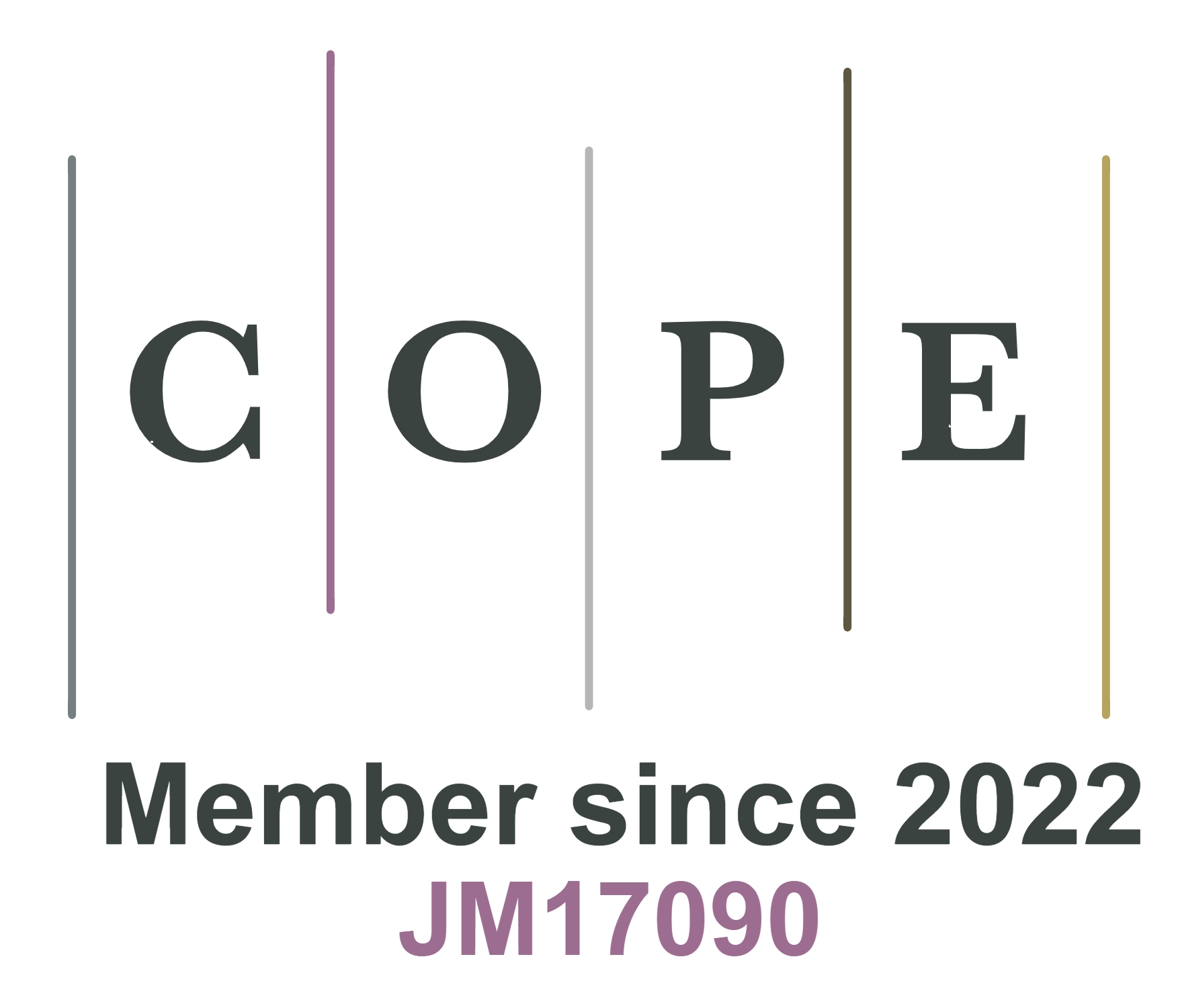REFERENCES
2. Ohyama T, Schneider-Mizell CM, Fetter RD, et al. A multilevel multimodal circuit enhances action selection in drosophila. Nature 2015;520:633-9.
3. Tan H, Zhou Y, Tao Q, Rosen J, van Dijken S. Bioinspired multisensory neural network with crossmodal integration and recognition. Nat Commun 2021;12:1120.
4. Ernst MO, Banks MS. Humans integrate visual and haptic information in a statistically optimal fashion. Nature 2002;415:429-33.
5. Macaluso E, Driver J. Multisensory spatial interactions: a window onto functional integration in the human brain. Trends Neurosci 2005;28:264-71.
6. Green AM, Angelaki DE. Multisensory integration: resolving sensory ambiguities to build novel representations. Curr Opin Neurobiol 2010;20:353-60.
7. Ohshiro T, Angelaki DE, DeAngelis GC. A normalization model of multisensory integration. Nat Neurosci 2011;14:775-82.
8. Hagmann CE, Russo N. Multisensory integration of redundant trisensory stimulation. Atten Percept Psychophys 2016;78:2558-68.
9. Zhu B, Wang H, Liu Y, et al. Skin-inspired haptic memory arrays with an electrically reconfigurable architecture. Adv Mater 2016;28:1559-66.
10. Chen S, Jiang K, Lou Z, Chen D, Shen G. Recent developments in graphene-based tactile sensors and e-skins. Adv Mater Technol 2018;3:1700248.
11. Jeon S, Lim S, Trung TQ, Jung M, Lee N. Flexible multimodal sensors for electronic skin: principle, materials, device, array architecture, and data acquisition method. Proc IEEE 2019;107:2065-83.
12. Xu K, Lu Y, Takei K. Multifunctional skin-inspired flexible sensor systems for wearable electronics. Adv Mater Technol 2019;4:1800628.
13. Li H, Ma Y, Liang Z, et al. Wearable skin-like optoelectronic systems with suppression of motion artifacts for cuff-less continuous blood pressure monitor. Natl Sci Rev 2020;7:849-62.
14. Wu X, Ahmed M, Khan Y, et al. A potentiometric mechanotransduction mechanism for novel electronic skins. Sci Adv 2020;6:eaba1062.
15. Choi I, Lee JY, Lee SH. Bottom-up and top-down modulation of multisensory integration. Curr Opin Neurobiol 2018;52:115-22.
16. Li H, Xu Y, Li X, et al. Epidermal inorganic optoelectronics for blood oxygen measurement. Adv Healthc Mater 2017;6:1601013.
17. Boutry CM, Negre M, Jorda M, et al. A hierarchically patterned, bioinspired e-skin able to detect the direction of applied pressure for robotics. Sci Robot 2018;3:eaau6914.
18. Choi S, Han SI, Jung D, et al. Highly conductive, stretchable and biocompatible Ag-Au core-sheath nanowire composite for wearable and implantable bioelectronics. Nat Nanotechnol 2018;13:1048-56.
19. Wang M, Wang W, Leow WR, et al. Enhancing the matrix addressing of flexible sensory arrays by a highly nonlinear threshold switch. Adv Mater 2018;30:e1802516.
20. Yang JC, Mun J, Kwon SY, Park S, Bao Z, Park S. Electronic skin: recent progress and future prospects for skin-attachable devices for health monitoring, robotics, and prosthetics. Adv Mater 2019;31:e1904765.
21. Lee S, Franklin S, Hassani FA, et al. Nanomesh pressure sensor for monitoring finger manipulation without sensory interference. Science 2020;370:966-70.
22. Wang Y, Lee S, Yokota T, et al. A durable nanomesh on-skin strain gauge for natural skin motion monitoring with minimum mechanical constraints. Sci Adv 2020;6:eabb7043.
23. Yang X, Li L, Wang S, et al. Ultrathin, stretchable, and breathable epidermal electronics based on a facile bubble blowing method. Adv Electron Mater 2020;6:2000306.
25. Tien NT, Jeon S, Kim DI, et al. A flexible bimodal sensor array for simultaneous sensing of pressure and temperature. Adv Mater 2014;26:796-804.
26. Won SM, Wang H, Kim BH, et al. Multimodal sensing with a three-dimensional piezoresistive structure. ACS Nano 2019;13:10972-9.
27. Li G, Liu S, Wang L, Zhu R. Skin-inspired quadruple tactile sensors integrated on a robot hand enable object recognition. Sci Robot 2020;5:eabc8134.
28. Senkowski D, Schneider TR, Foxe JJ, Engel AK. Crossmodal binding through neural coherence: implications for multisensory processing. Trends Neurosci 2008;31:401-9.
29. Stein BE, Stanford TR. Multisensory integration: current issues from the perspective of the single neuron. Nat Rev Neurosci 2008;9:255-66.
30. Fetsch CR, DeAngelis GC, Angelaki DE. Bridging the gap between theories of sensory cue integration and the physiology of multisensory neurons. Nat Rev Neurosci 2013;14:429-42.
31. Wang J, Wang C, Cai P, et al. Artificial sense technology: emulating and extending biological senses. ACS Nano 2021;15:18671-8.
32. Li G, Zhu R. A multisensory tactile system for robotic hands to recognize objects. Adv Mater Technol 2019;4:1900602.
33. Wang M, Yan Z, Wang T, et al. Gesture recognition using a bioinspired learning architecture that integrates visual data with somatosensory data from stretchable sensors. Nat Electron 2020;3:563-70.
34. Baltrušaitis T, Ahuja C, Morency L. Challenges and applications in multimodal machine learning. The Handbook of Multimodal-Multisensor Interfaces: Signal Processing, Architectures, and Detection of Emotion and Cognition 2018;2:17-48.
36. Wang M, Wang T, Luo Y, et al. Fusing stretchable sensing technology with machine learning for human-machine interfaces. Adv Funct Mater 2021;31:2008807.
37. Carleton A, Accolla R, Simon SA. Coding in the mammalian gustatory system. Trends Neurosci 2010;33:326-34.
38. Svechtarova MI, Buzzacchera I, Toebes BJ, Lauko J, Anton N, Wilson CJ. Sensor devices inspired by the five senses: a review. Electroanalysis 2016;28:1201-41.
39. Keat J, Reinagel P, Reid RC, Meister M. Predicting every spike: a model for the responses of visual neurons. Neuron 2001;30:803-17.
41. Fries P. A mechanism for cognitive dynamics: neuronal communication through neuronal coherence. Trends Cogn Sci 2005;9:474-80.
42. Womelsdorf T, Schoffelen JM, Oostenveld R, et al. Modulation of neuronal interactions through neuronal synchronization. Science 2007;316:1609-12.
43. Atilgan H, Town SM, Wood KC, et al. Integration of visual information in auditory cortex promotes auditory scene analysis through multisensory binding. Neuron 2018;97:640-655.e4.
44. Beauchamp MS. See me, hear me, touch me: multisensory integration in lateral occipital-temporal cortex. Curr Opin Neurobiol 2005;15:145-53.
45. Kayser C, Petkov CI, Augath M, Logothetis NK. Integration of touch and sound in auditory cortex. Neuron 2005;48:373-84.
46. Talsma D, Senkowski D, Soto-Faraco S, Woldorff MG. The multifaceted interplay between attention and multisensory integration. Trends Cogn Sci 2010;14:400-10.
47. Arnal LH, Giraud AL. Cortical oscillations and sensory predictions. Trends Cogn Sci 2012;16:390-8.
48. Atiani S, David SV, Elgueda D, et al. Emergent selectivity for task-relevant stimuli in higher-order auditory cortex. Neuron 2014;82:486-99.
49. Makino H, Komiyama T. Learning enhances the relative impact of top-down processing in the visual cortex. Nat Neurosci 2015;18:1116-22.
50. Manita S, Suzuki T, Homma C, et al. A top-down cortical circuit for accurate sensory perception. Neuron 2015;86:1304-16.
52. Hua Q, Sun J, Liu H, et al. Skin-inspired highly stretchable and conformable matrix networks for multifunctional sensing. Nat Commun 2018;9:244.
53. You I, Mackanic DG, Matsuhisa N, et al. Artificial multimodal receptors based on ion relaxation dynamics. Science 2020;370:961-5.
54. Ho DH, Sun Q, Kim SY, Han JT, Kim DH, Cho JH. Stretchable and multimodal all graphene electronic skin. Adv Mater 2016;28:2601-8.
55. Yamamoto Y, Harada S, Yamamoto D, et al. Printed multifunctional flexible device with an integrated motion sensor for health care monitoring. Sci Adv 2016;2:e1601473.
56. Yang S, Chen YC, Nicolini L, et al. “Cut-and-paste” manufacture of multiparametric epidermal sensor systems. Adv Mater 2015;27:6423-30.
57. Kim SY, Park S, Park HW, Park DH, Jeong Y, Kim DH. Highly sensitive and multimodal all-carbon skin sensors capable of simultaneously detecting tactile and biological stimuli. Adv Mater 2015;27:4178-85.
58. Gao W, Emaminejad S, Nyein HYY, et al. Fully integrated wearable sensor arrays for multiplexed in situ perspiration analysis. Nature 2016;529:509-14.
59. Wang C, Xia K, Zhang M, Jian M, Zhang Y. An all-silk-derived dual-mode e-skin for simultaneous temperature-pressure detection. ACS Appl Mater Interfaces 2017;9:39484-92.
60. Zhao S, Zhu R. Electronic skin with multifunction sensors based on thermosensation. Adv Mater 2017;29:1606151.
61. Yu Y, Nassar J, Xu C, et al. Biofuel-powered soft electronic skin with multiplexed and wireless sensing for human-machine interfaces. Sci Robot 2020;5:eaaz7946.
62. Li L, Zhao S, Ran W, et al. Dual sensing signal decoupling based on tellurium anisotropy for VR interaction and neuro-reflex system application. Nat Commun 2022;13:5975.
63. Chun KY, Seo S, Han CS. A wearable all-gel multimodal cutaneous sensor enabling simultaneous single-site monitoring of cardiac-related biophysical signals. Adv Mater 2022;34:e2110082.
64. Yao S, Myers A, Malhotra A, et al. A wearable hydration sensor with conformal nanowire electrodes. Adv Healthc Mater 2017;6:1601159.
65. Yang R, Zhang W, Tiwari N, Yan H, Li T, Cheng H. Multimodal sensors with decoupled sensing mechanisms. Adv Sci 2022;9:e2202470.
66. Gui Q, He Y, Gao N, Tao X, Wang Y. A skin-inspired integrated sensor for synchronous monitoring of multiparameter signals. Adv Funct Mater 2017;27:1702050.
67. Scaffaro R, Maio A, Citarrella MC. Ionic tactile sensors as promising biomaterials for artificial skin: review of latest advances and future perspectives. Eur Polym J 2021;151:110421.
68. Yan Y, Hu Z, Yang Z, et al. Soft magnetic skin for super-resolution tactile sensing with force self-decoupling. Sci Robot 2021;6:eabc8801.
69. Shin YE, Park YJ, Ghosh SK, Lee Y, Park J, Ko H. Ultrasensitive multimodal tactile sensors with skin-inspired microstructures through localized ferroelectric polarization. Adv Sci 2022;9:e2105423.
70. Zhang H, Chen H, Lee J, et al. Bioinspired chromotropic ionic skin with in-plane strain/temperature/pressure multimodal sensing and ultrahigh stimuli discriminability. Adv Funct Mater 2022;32:2208362.
71. Wan C, Cai P, Guo X, et al. An artificial sensory neuron with visual-haptic fusion. Nat Commun 2020;11:4602.
72. Liu M, Zhang Y, Wang J, et al. A star-nose-like tactile-olfactory bionic sensing array for robust object recognition in non-visual environments. Nat Commun 2022;13:79.
73. Ehatisham-ul-haq M, Javed A, Azam MA, et al. Robust human activity recognition using multimodal feature-level fusion. IEEE Access 2019;7:60736-51.
74. Ahmad Z, Khan N. Human action recognition using deep multilevel multimodal (M2) fusion of depth and inertial sensors. IEEE Sensors J 2020;20:1445-55.
75. Dawar N, Ostadabbas S, Kehtarnavaz N. Data augmentation in deep learning-based fusion of depth and inertial sensing for action recognition. IEEE Sens Lett 2019;3:1-4.
76. Dawar N, Kehtarnavaz N. Action detection and recognition in continuous action streams by deep learning-based sensing fusion. IEEE Sensors J 2018;18:9660-8.
78. Xu J, Yao T, Zhang Y, Mei T. Learning multimodal attention LSTM networks for video captioning. Proceedings of the 25th ACM international conference on Multimedia; 2017. p. 537-45.
79. Shon S, Oh T, Glass J. Noise-tolerant audio-visual online person verification using an attention-based neural network fusion. ICASSP 2019 - 2019 IEEE International Conference on Acoustics, Speech and Signal Processing (ICASSP); 2019. p. 3995-9.
80. Shyu M, Xie Z, Chen M, Chen S. Video semantic event/concept detection using a subspace-based multimedia data mining framework. IEEE Trans Multimedia 2008;10:252-9.
81. Yang Z, Li Q, Lu Z, Ma Y, Gong Z, Pan H. Semi-supervised multimodal clustering algorithm integrating label signals for social event detection. 2015 IEEE International Conference on Multimedia Big Data; 2015 Apr 20-22; Beijing, China. IEEE; 2015. p. 32-9.









